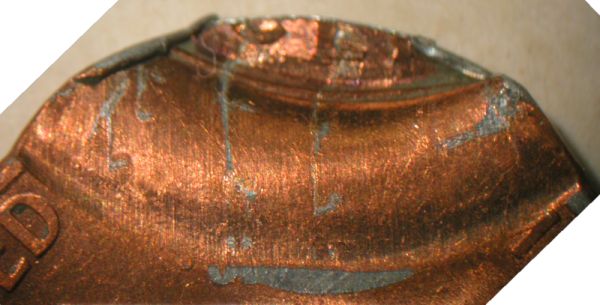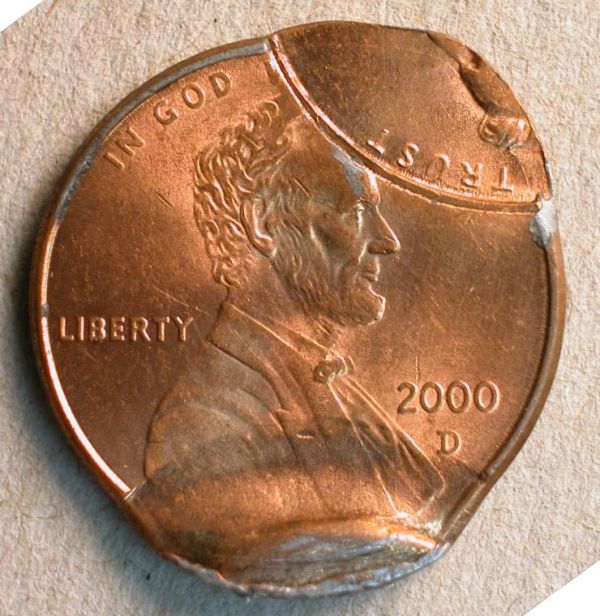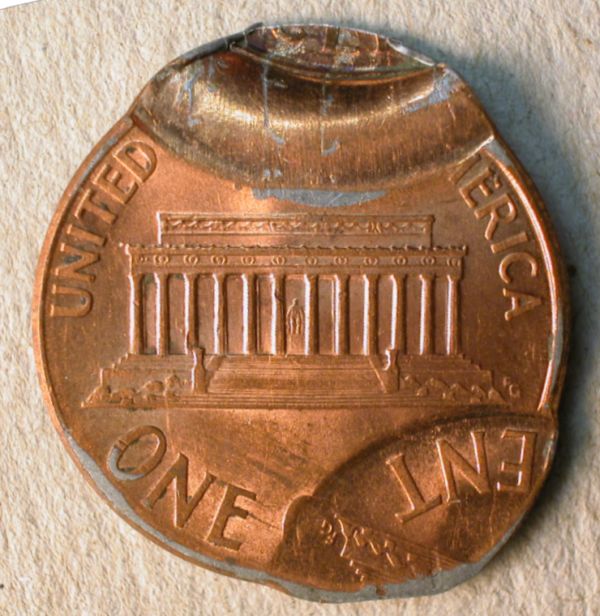Part VI. Striking Errors:
Skidding Die Errors:
Design Ablation Errors
Definition: The scraping-off of a coin’s design during a second strike by a laterally shifting hammer die. The only known example of this error type is seen in a quadruple-struck 2000-D cent (see photos). This specimen was struck by inverted dies (reverse die as hammer die) in a dual or quad press. The first strike was perfectly normal. The second strike was 73% off-center and uniface. During this second strike, the hammer die contacted the reverse face directly while the obverse face rested on an underlying planchet. After sinking into the coin a short distance, the hammer die shifted several millimeters northward, completely scraping off the first-strike design. The hammer die then seems to have retracted in preparation for the next strike. The final two off-center strikes were delivered in tandem as a conventional saddle strike. The larger of the two off-center strikes is die strike on both faces. The smaller off-center strike is uniface, with the reverse face being die-struck. This smaller off-center strike was presumably delivered by the same hammer die that generated the design ablation error on the previous strike.


